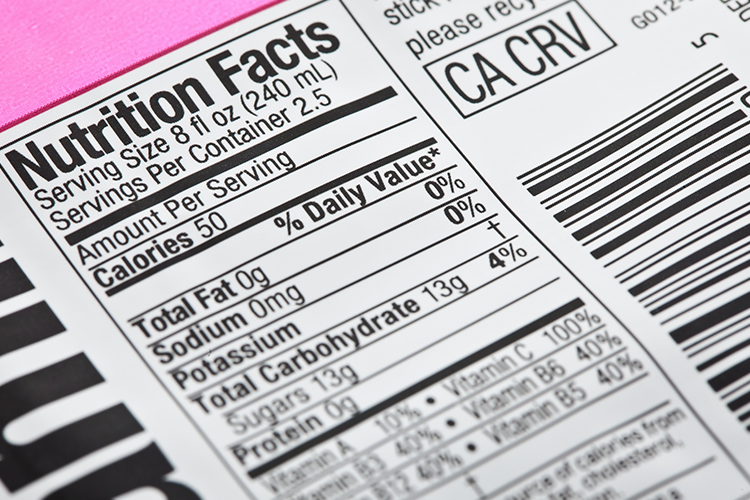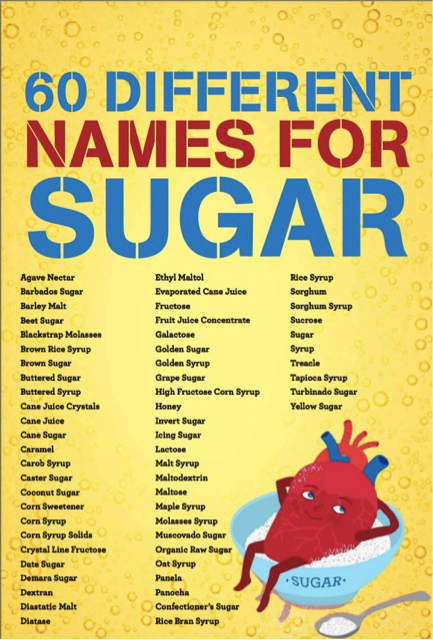Blog
Adding added sugars to nutrition panels
 Nutrition panels serve to educate and inform us of the basic nutritional content of packaged foods we eat. Various components are mandatory to list – like fats, protein, carbohydrate and energy – whilst others, like added sugar content, are yet to make an appearance.
Nutrition panels serve to educate and inform us of the basic nutritional content of packaged foods we eat. Various components are mandatory to list – like fats, protein, carbohydrate and energy – whilst others, like added sugar content, are yet to make an appearance.
At least that is the case in Australia and New Zealand. In the U.S., however, it was recently announced some serious alterations to the U.S. Nutrition Facts panel are to take place.
The face of Nutrition Facts changing
Nutrition Facts changes on U.S. packaged food include a larger, bolder font for calorie count, serving sizes that represent what people actually eat, and revised percent of daily value of sodium, fibre and vitamin D. And interestingly, total energy from fat is being removed, focusing instead on the type of fat, as we understand increasingly that different fats each have differing effects on health.
And now food manufacturers are also now required to list added sugar content, in grams and percentage of daily value. Which is great!
According to the FDA, this would include “sugars that are either added during the processing of foods, or are packaged as such, and include sugars (free, mono- and disaccharides), sugars from syrups and honey, and sugars from concentrated fruit or vegetable juices…as well as some sugars found in fruit and vegetable juices, jellies, jams, preserves, and fruit spreads.”1
Daily value for added sugar intake is pitched at 10%. On average this is equivalent of 12 teaspoons, or 50 grams of the sweet stuff. However, we here at That Sugar prefer to stick with the World Health Organization’s suggestion for added sugars to comprise no more than 5% of daily energy intake, as this is associated with health benefits.2
However, assessing added sugar content on Australian and New Zealand nutrition panels isn’t yet quite so clear.
Australian and New Zealand nutrition panels
On your average supermarket venture, it can be difficult to fully decipher the label table, at least when juggling 3 kids, maneuvering a heavy trolley, and rushing to get to soccer practice on time!
For a brief overview, in Australia and New Zealand nutrition panels are required to list amounts as per serve and per 100g/100ml, and broken down as follows:3
Energy – this is the measurement of kilojoules released in the body once consumed from protein, fat, carbohydrate, dietary fibre and alcohol.
Protein – this is the content of protein from animal and plant ingredients within the product. It does not offer a breakdown of specific amino acids, the compounds that are the building blocks of protein.
Fats – fats must note total fat and saturated fat content. If a health claim is made around monounsaturated or polyunsaturated fat, cholesterol or trans-fat content, these too must be listed. But otherwise, any further breakdown of fatty acid profile is not required.
Carbohydrates – this lists total carbohydrates including starches and sugars. As carbs are not all created (or digested and absorbed) equally, it is handy to consider the fibre and sugar content on the label in relation to total carbohydrates.
As fibre is non-digestible, a high fibre content can indicate less of an effect on blood glucose, slowing the digestion of the carbohydrate into simple sugars, and steadying the simple sugar absorption. Unfortunately, fibre content is not mandatory to list unless a health claim is made.
But if sugar content is higher, then read on…
Sugars – this includes the total amount of naturally occurring and added sugars. And not distinguishing the two can make life difficult for you and I to determine how much added sugar content might be hiding in that packaged food.
Naturally occurring sugars can be found in foods like dried fruit, dairy and fresh fruit.
Dairy is particularly interesting. Lactose, a simple sugar in dairy products will be included in the total sugar count, but can be separated from other simple sugars as it’s impact is different than, say, glucose or fructose (explained in more detail in the film and That Sugar Book).
Natural or plain full-fat yoghurt has about 4-6g/100g (approximately 1 teaspoon) of naturally occurring sugar (lactose), with Greek yoghurt less again. So, we need to subtract that from the total sugar amount to begin to ascertain how much added sugar is within a dairy product.
At the moment, the best way to estimate added sugar content vs naturally occurring is having a scour of the ingredients list. If something from the list below is included, then that product contains added sugar. And the higher up the ingredient list, the more added sugars comprise the total sugar amount!
Other – Sodium, dietary fibre and specific nutrients can be listed too. Food Standards Australia New Zealand has further information.
Breaking the nutrients down
The nutrition panel definitely serves a purpose in informing us of basic nutritional content of the food. But what if it went one step further, making it mandatory to break down the composition of fatty acids and carbohydrates?
What about monounsaturated fats and trans-fats, for example? Each has a very different health outcomes when consumed regularly!
And we all know that the digestion and absorption of various sources of carbs and sugars are not equal. In future, hopefully we will follow in the U.S. footsteps and separate out added sugars on the nutrition panel from the rest. We could also include a mandatory breakdown of the fatty acid composition. Each would help make good food choices, and the supermarket trip a little less stressful and snappier.
For now, we understand that sifting the added from the naturally occurring sugars can be a lot of work, right?
Well, That Sugar has something exciting in the works, to help tackle the issue of understanding how much added sugar is in your food!
Watch this space – more on this coming soon 🙂
By Angela Johnson (BHSc Nut. Med.)
References:
- S. Food and Drug Administration 2016, Changes to the Nutrition Facts Label, viewed 8 August 2016, <http://www.fda.gov/Food/GuidanceRegulation/GuidanceDocumentsRegulatoryInformation/LabelingNutrition/ucm385663.htm>
- World Health Organization 2015, WHO calls on countries to reduce sugars intake among adults and children, viewed 8 August 2016, <http://www.who.int/mediacentre/news/releases/2015/sugar-guideline/en/>
- Food Standards Australia New Zealand 2015, ‘Nutrition information panels’, viewed 8 August 2016, <http://www.foodstandards.gov.au/consumer/labelling/panels/Pages/default.aspx>












